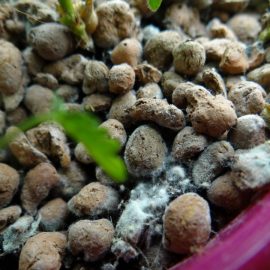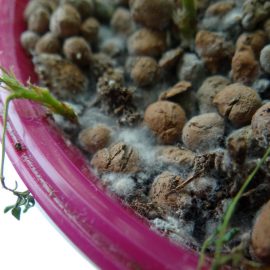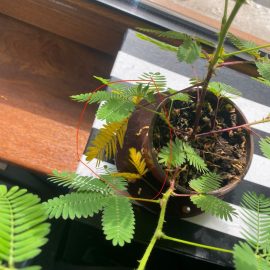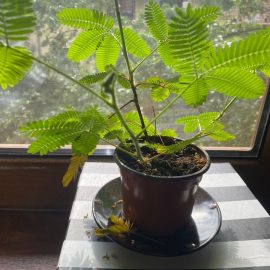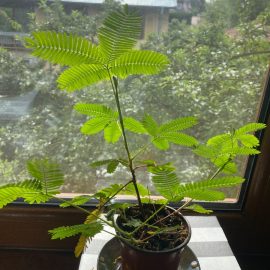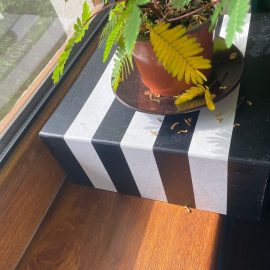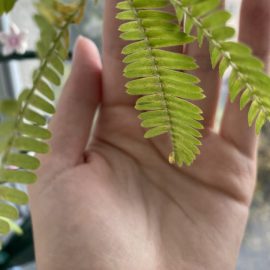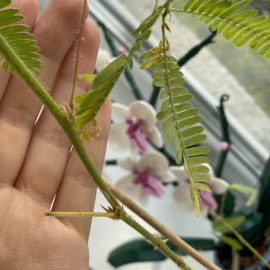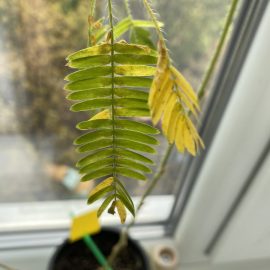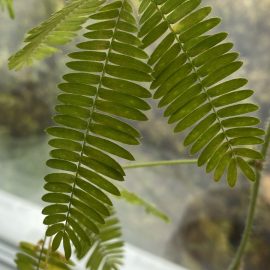Mimosa, plant care and growing guide
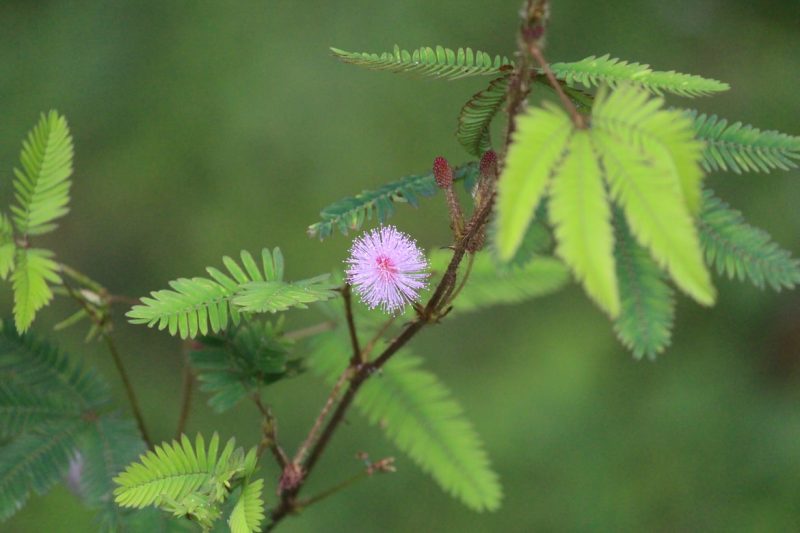
Mimosa (Mimosa pudica) is a plant native to the tropics of Central and South America, but it can be found in all tropical regions of the world. It belongs to the Fabaceae family, being related to the Acacia or the silk tree. It is also popularly known as the Shameplant or Mimosa pudica, being a plant sensitive to the touch. So, at the slightest touch of the leaves, they will tighten quickly. It is important to know that frequent touches exhaust the plant. Mimosa has feather-like compound leaves, which are about 5-10 cm long, green in color, and are similar to Ferns’ leaves.
The plant blooms in July-August. The flowers are small, clustered in slightly spherical inflorescences, pink or purple. The flowers have four small petals, four tiny sepals, and four stamens. The stamens represent the most prominent part of the flowers, giving them a fluffy-ruffled appearance.
It is often used as a houseplant, but it does not have very long longevity. After flowering, the plant tends to degrade.
Species and varieties. This species has three varieties: Mimosa pudica var. hispida, Mimosa pudica var. unijula, Mimosa pudica var. tetandra – it is rarely encountered.
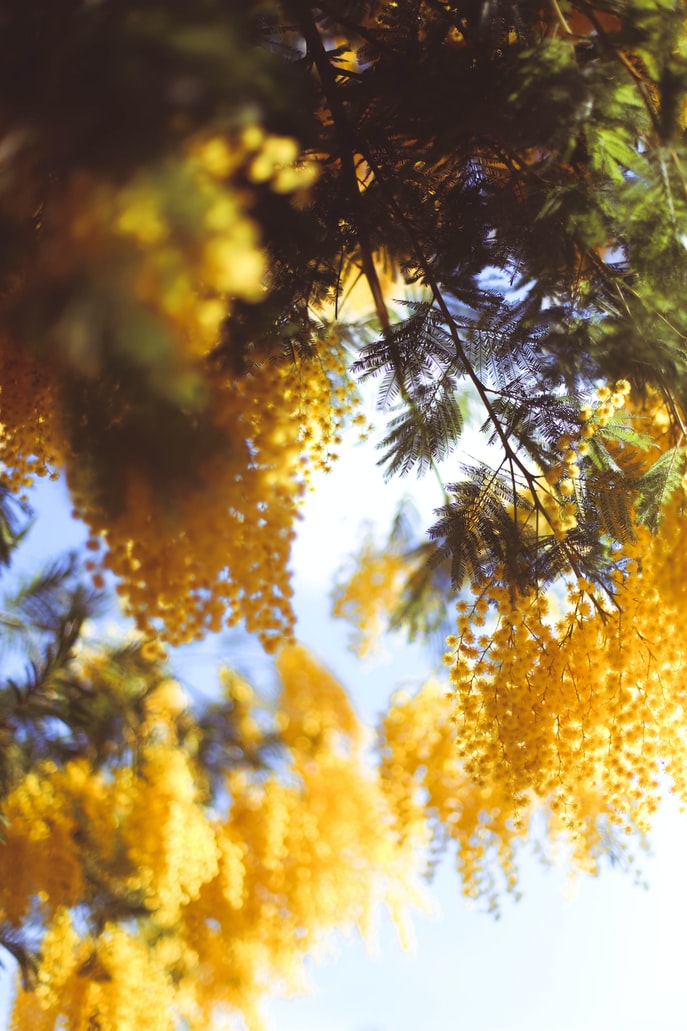
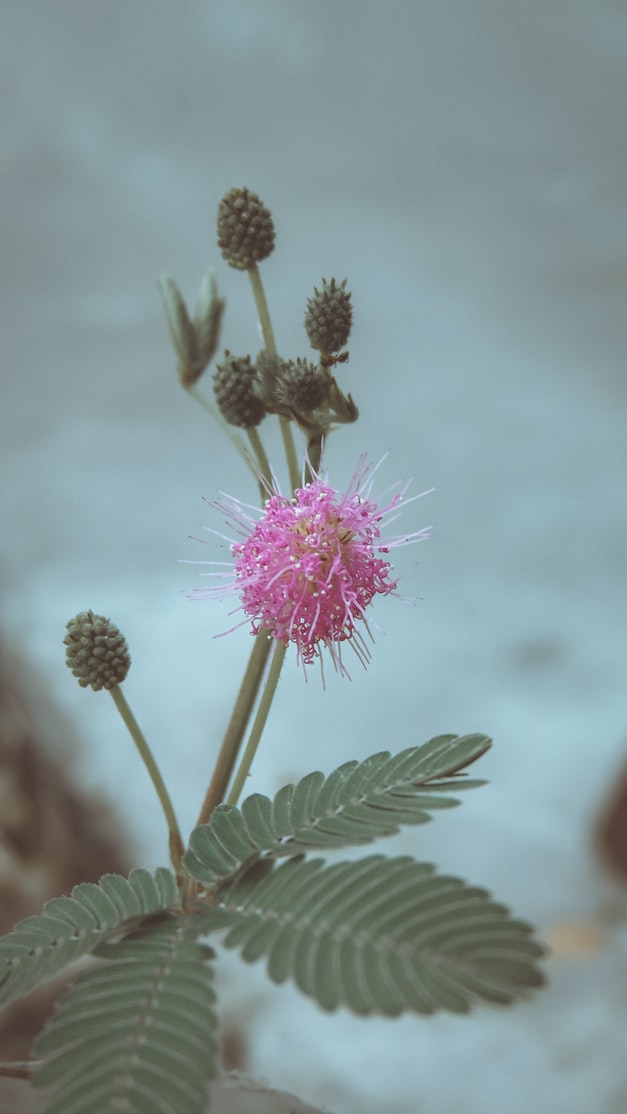
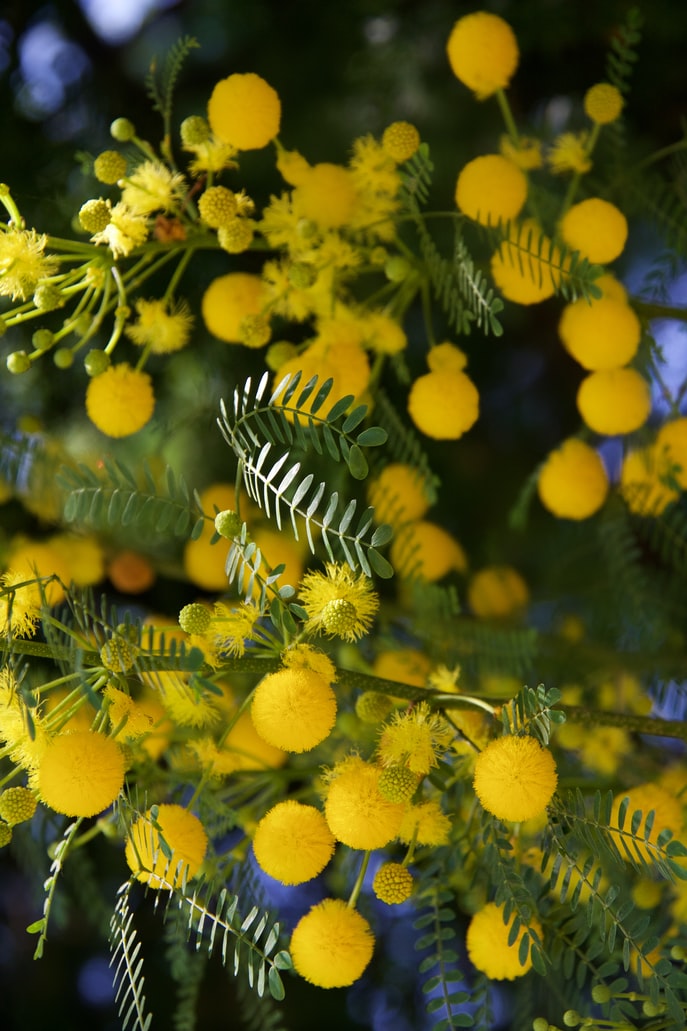
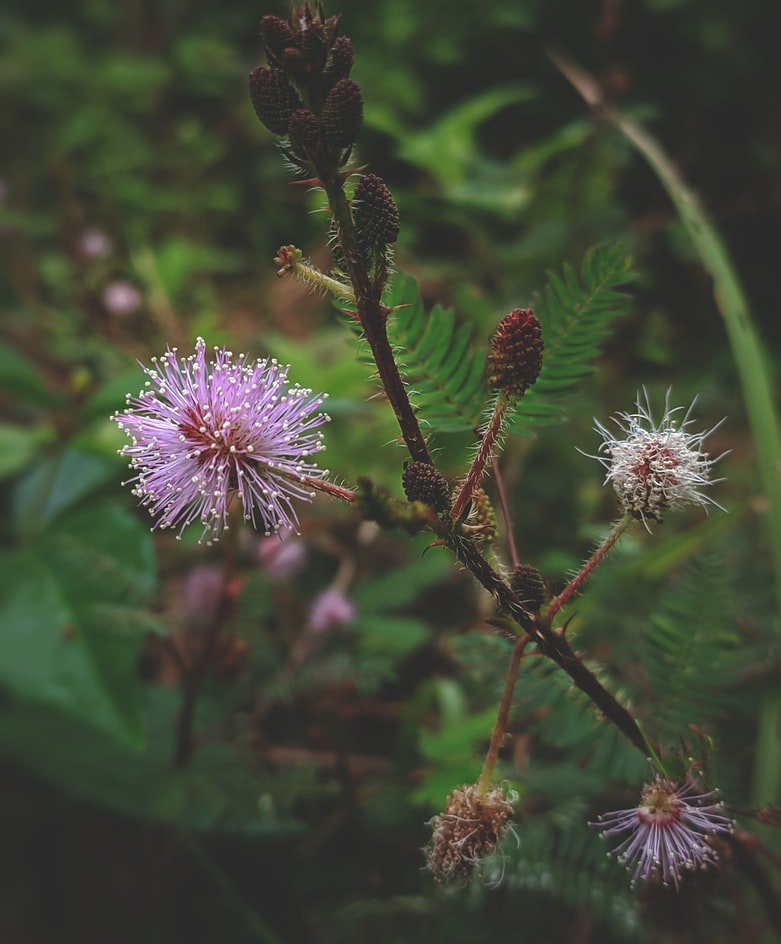
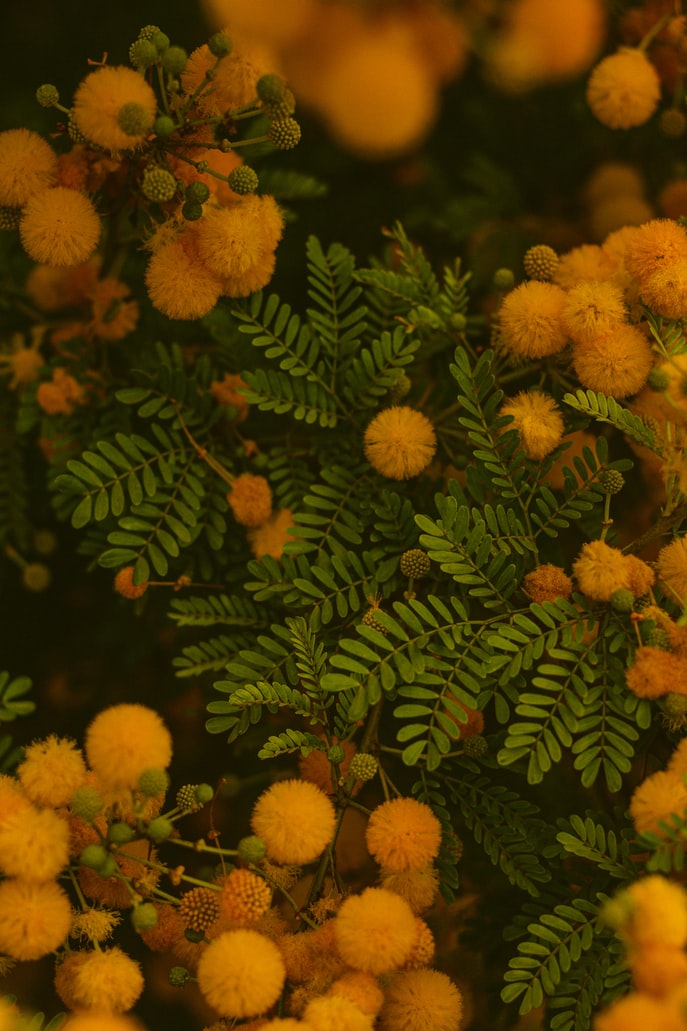
Light. It prefers being placed in sunny places with lots of light. During the summer, it can be moved outside to a sunny area.
Temperature. It grows optimally at temperatures between 20-25° C, but it can also tolerate lower temperatures – up to 10° C or higher – up to 32° C.
Humidity. Mimosa grows and blooms best when the humidity is constant and moderate, both in the substrate and in the atmosphere.
Substrate. It grows well in a fertile substrate, with a very good drainage capacity.
Recommended products
-
You can find products on a different store
Change Store -
You can find products on a different store
Change Store -
You can find products on a different store
Change Store -
You can find products on a different store
Change Store -
You can find products on a different store
Change Store -
You can find products on a different store
Change Store -
You can find products on a different store
Change Store -
You can find products on a different store
Change Store -
You can find products on a different store
Change Store -
You can find products on a different store
Change Store -
You can find products on a different store
Change Store -
You can find products on a different store
Change Store -
You can find products on a different store
Change Store -
You can find products on a different store
Change Store -
You can find products on a different store
Change Store -
You can find products on a different store
Change Store -
You can find products on a different store
Change Store -
You can find products on a different store
Change Store -
You can find products on a different store
Change Store -
You can find products on a different store
Change Store -
You can find products on a different store
Change Store -
You can find products on a different store
Change Store -
You can find products on a different store
Change Store -
You can find products on a different store
Change Store
Watering. It will be done regularly so that the substrate is maintained at a constant humidity, but the water should not stagnate. In winter, the amount of water should decrease.
Fertilization. It is done during the active growing period (May-August), with a special fertilizer for indoor flowering plants.
Recommended products
-
You can find products on a different store
Change Store -
You can find products on a different store
Change Store -
You can find products on a different store
Change Store -
You can find products on a different store
Change Store -
You can find products on a different store
Change Store -
You can find products on a different store
Change Store -
You can find products on a different store
Change Store -
You can find products on a different store
Change Store -
You can find products on a different store
Change Store -
You can find products on a different store
Change Store -
You can find products on a different store
Change Store -
You can find products on a different store
Change Store -
You can find products on a different store
Change Store -
You can find products on a different store
Change Store -
You can find products on a different store
Change Store -
You can find products on a different store
Change Store -
You can find products on a different store
Change Store -
You can find products on a different store
Change Store -
You can find products on a different store
Change Store -
You can find products on a different store
Change Store -
You can find products on a different store
Change Store -
You can find products on a different store
Change Store -
You can find products on a different store
Change Store -
You can find products on a different store
Change Store
It is a plant sensitive to transplanting.
Propagation. It propagates easily in spring through seeds. They are placed in a suitable substrate that must be kept slightly moist. Another method of propagation is through cuttings, harvested in spring from the semi-lignified shoots of the plant.
Recommended products
-
You can find products on a different store
Change Store -
You can find products on a different store
Change Store -
You can find products on a different store
Change Store -
You can find products on a different store
Change Store -
You can find products on a different store
Change Store -
You can find products on a different store
Change Store -
You can find products on a different store
Change Store -
You can find products on a different store
Change Store -
You can find products on a different store
Change Store -
You can find products on a different store
Change Store -
You can find products on a different store
Change Store -
You can find products on a different store
Change Store -
You can find products on a different store
Change Store -
You can find products on a different store
Change Store -
You can find products on a different store
Change Store -
You can find products on a different store
Change Store -
You can find products on a different store
Change Store -
You can find products on a different store
Change Store -
You can find products on a different store
Change Store -
You can find products on a different store
Change Store -
You can find products on a different store
Change Store -
You can find products on a different store
Change Store -
You can find products on a different store
Change Store -
You can find products on a different store
Change Store
Recommended products
-
You can find products on a different store
Change Store -
You can find products on a different store
Change Store -
You can find products on a different store
Change Store -
You can find products on a different store
Change Store -
You can find products on a different store
Change Store -
You can find products on a different store
Change Store -
You can find products on a different store
Change Store -
You can find products on a different store
Change Store -
You can find products on a different store
Change Store -
You can find products on a different store
Change Store -
You can find products on a different store
Change Store -
You can find products on a different store
Change Store -
You can find products on a different store
Change Store -
You can find products on a different store
Change Store -
You can find products on a different store
Change Store -
You can find products on a different store
Change Store -
You can find products on a different store
Change Store -
You can find products on a different store
Change Store -
You can find products on a different store
Change Store -
You can find products on a different store
Change Store -
You can find products on a different store
Change Store -
You can find products on a different store
Change Store -
You can find products on a different store
Change Store -
You can find products on a different store
Change Store
Diseases and pests. It is sensitive to mite attacks. Also, in conditions of high substrate humidity and low temperatures, it can rot.
In addition:
- yellowed leaves can be a sign that the humidity is low.
- it is a heat-loving species, so it is recommended to be placed in heated spaces.














































































































































































































































































































































































































































